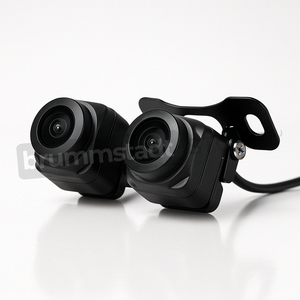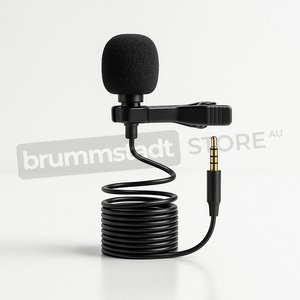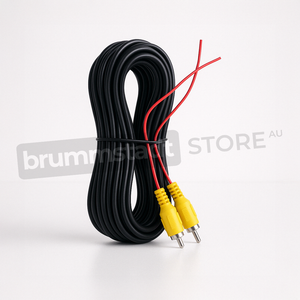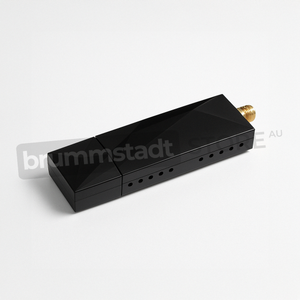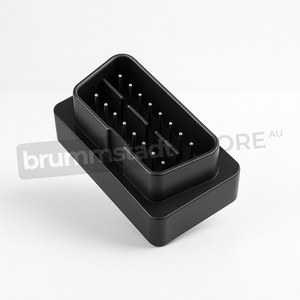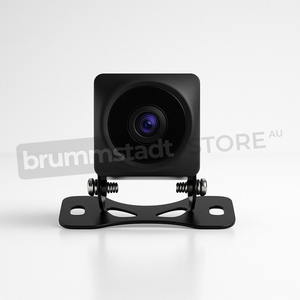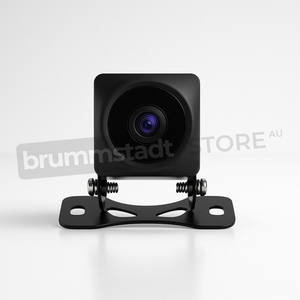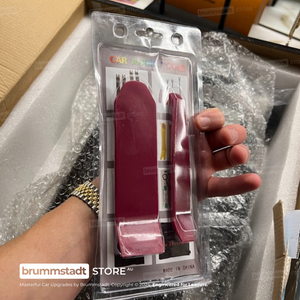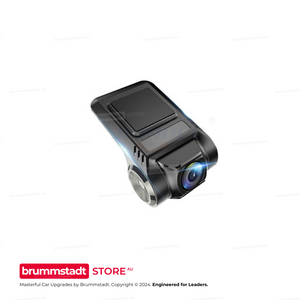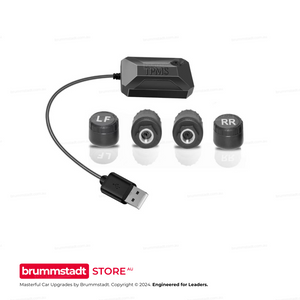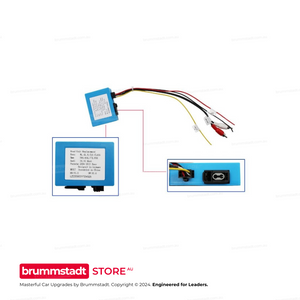Frequently Asked Questions
Everything you need to know about this head unit
Connect the single RCA cable with the yellow plug (included in your package) to extend your Bluetooth signal. This cable doubles as both a camera input AND a Bluetooth/WiFi antenna extension. The two small blue wires attached are antenna boosters that significantly improve connection stability. This simple connection takes 30 seconds and resolves 90% of Bluetooth issues. Make sure it's firmly connected even if you're not using a rear camera.
Try these proven solutions:
1. Quick Fix: Settings → Apps → Z-Link → Disable → Enable → Open (repeat each use)
2. Check Cables: Use the data/charge USB cable (not charge-only)
3. Bluetooth Setting: Disconnect all other Bluetooth connections - CarPlay needs exclusive access
4. Factory Reset Z-Link: Find the pink 'RESET' app, restart, reconnect Bluetooth, then try Z-Link
5. Sound Issues: Switch audio source to 'AUX' or 'USB/AUX' in your vehicle menu
Most issues are resolved with step 1 or 3!
The processor differs between models: The 2/32GB has a 4-Core processor, while 4/64GB and 8/128GB models feature the powerful 8-Core Cortex-A55 processor. Combined with RAM differences: The 2/32GB model with its 4-Core processor and limited RAM may experience slowdowns with heavy multitasking. The 4/64GB with 8-Core provides smooth performance for most users - no lag, seamless app switching, and enough storage for maps and music. The 8/128GB with 8-Core offers maximum performance with its generous RAM allowing unlimited multitasking and massive storage for extensive media libraries. Think of RAM like your desk space - more RAM means you can have more apps open simultaneously without slowing down.
Absolutely normal! These head units are complete replacement systems with their own GPS antenna, microphone, and Bluetooth module. Your factory connectors for these features won't be needed anymore. The important connections are: main power harness, speaker outputs, and the yellow RCA cable (even if not using a camera - it extends Bluetooth range). Any leftover factory plugs can be safely tucked away. If you're unsure about any connection, our support team is here 7 days a week.
Z-Link updates are handled through system firmware updates. Go to Settings → System → System Update. If an update is available, download it to a USB drive (FAT32 format) and install. Important: Never download Z-Link APKs from unofficial sources - they won't work and may cause issues. If you're having compatibility issues with newer iOS versions, the disable/enable workaround (Settings → Apps → Z-Link) usually resolves them while waiting for official updates.
Consider your usage:
• 2/32GB (4-Core): Budget option - fine for basic use, but may lag with multiple apps due to 4-Core processor and limited RAM
• 4/64GB (8-Core): Sweet spot - smooth Android Auto/CarPlay, multitasking, and ample storage
• 8/128GB (8-Core): Premium choice - unlimited multitasking, massive storage, future-proof for years
Most customers choose 4/64GB for the perfect balance of performance and value. The extra RAM makes a huge difference in daily smoothness!
The yellow RCA cable's blue antenna wires also boost WiFi signal! Make sure this cable is connected. Additionally, try these tips: Position the blue antenna wires away from metal surfaces, check that your phone's hotspot is set to 2.4GHz (not 5GHz) for better range, and ensure the head unit's WiFi sleep policy is set to 'Never' in Settings → WiFi → Advanced. For best performance with wireless CarPlay, keep your phone within 1-2 meters of the head unit.
Go to Settings → Sound → Equalizer and adjust to your preference. For more volume, increase the 'Loudness' setting. The 4/64GB and 8/128GB models have superior audio chips that provide cleaner, louder sound. If you have an amplifier, use the RCA outputs for best quality. Also check Settings → Factory Settings (password usually 126) → Audio settings for additional gain controls. Remember: higher-spec models (4GB+) include premium audio components for noticeably better sound.
Yes! Most vehicles work instantly. If not, use the steering wheel learning app: tap the steering wheel icon, press each button on your wheel, and assign functions. For newer vehicles with CANbus, we provide CANbus modules for automatic setup. Some vehicles may need the Key1/Key2 wires connected (usually included in our harness). If you're having trouble, let us know your exact vehicle model and we'll provide specific instructions.
We offer a 30-day return policy. If it doesn't fit or there's a compatibility issue, we'll work with you to resolve it. If you change your mind, a 20% restocking fee applies. Our team verifies compatibility before shipping to minimize issues. We provide installation support 7 days a week to help resolve any problems. With our 3-year warranty and Australian-based support, you can purchase with confidence. Full details in our Refund Policy.
Historical Evolution and Heritage of the Nissan Maxima:
1. First Generation (1981-1984 - Datsun Maxima):
Initially presented in the North American market as the Datsun 810 Maxima, featuring a spacious interior, comfortable ride, and reliable inline-six engine, the cornerstone of the Maxima’s identity as a luxury-oriented sedan began here. Through refined engineering and attention to comfort, this model quickly garnered loyalty for its harmonious blend of practicality and premium appeal.
2. Second Generation (1985-1988):
With the second-generation offering, Nissan—as the marque had rebranded from Datsun—embraced front-wheel-drive architecture in the Maxima, enhancing passenger comfort and interior space. It stood out through the introduction of advanced technological features such as digital instrument clusters and voice reminders, thereby transforming consumer expectations of convenience and modernity.
3. Third Generation (1989-1994):
The third generation brought innovative leaps in design language alongside enhanced driving dynamics. This generation famously marketed itself as the "four-door sports car" (4DSC), encapsulating the passion Nissan engineers poured into its agile handling and responsive V6 engine. The Maxima firmly carved its niche as a balanced, driver-oriented premium sedan.
4. Fourth Generation (1995-1999):
Further embracing refinement, Nissan redesigned the exterior with sleek, contemporary styling matched by increased luxuriousness inside the cabin. The availability of a smooth VQ-series V6 engine combined with advanced comfort amenities secured widespread acclaim from drivers and automotive critics alike, solidifying Maxima’s position in the competitive luxury sedan segment.
5. Fifth Generation (2000-2003):
The early 2000s continued to emphasize mature refinement, subtle design sophistication, and a more potent VQ35DE 3.5-litre V6 engine. The Maxima now radiated elegance while providing increasingly athletic performance benchmarks, strongly aligning itself toward a sport-luxury audience discerning both comfort and spirited driving.
6. Sixth Generation (2004-2008):
Noticeably more imposing in physique and more expressive in styling, the sixth generation leaned into performance-oriented appeal, featuring even greater engine power and enhanced agility through finely tuned chassis dynamics. Technological sophistication also continued evolving, with innovative infotainment and driver assist options increasingly contesting fellow premium sedans.
7. Seventh Generation (2009-2014) — Nissan Maxima (A35 series):
The seventh-generation Nissan Maxima, produced between 2009 and 2014, combined Nissan's distinct personality with elevated craftsmanship. Sporting a muscular physique, expressive headlights, boldly sculpted fenders, and curved rooflines, this iteration presented an assertive contemporary aesthetic. Available primarily in North American and Australian markets, the A35 Maxima featured variations of the celebrated 3.5-litre VQ V6 engine, providing authoritative acceleration and responsive performance.
Inside, Nissan gave particular attention to driver-oriented cabin design, with intuitive controls, quality materials, finely contoured seats, and advanced technology features including navigation, Bluetooth connectivity, and immersive audio systems. The Maxima of this era successfully reaffirmed its longstanding heritage as the 4-door sports sedan, confidently blending sports-car responsiveness with sedan practicality and comfort.
Upgrading Cabin Technology with Brummstadt Integration:
Recognizing the growing desire among drivers for contemporary infotainment capabilities, renowned aftermarket specialists like Brummstadt offer specifically tailored infotainment solutions compatible with this generation of Nissan Maxima. The integration of a premium aftermarket head unit thoughtfully addresses modern connectivity expectations, bridging the technological gap historically limiting factory units.
Brummstadt’s comprehensive head unit integration seamlessly complements existing cabin ergonomics and aesthetics, offering wired and wireless Apple CarPlay and Android Auto compatibility. Owners benefit significantly from this enhancement: navigation routes planned before departure via smartphone navigation apps—such as Google Maps, WAZE, or Apple Maps—instantly appear on the head unit’s display. Imagine departing a favorite restaurant after family dinner, the destination already set effortlessly on the phone, promptly materializing on the display screen upon entering the vehicle, easing the transition between settings smoothly and safely.
Safety sees additional advantages through optional high-resolution 1080p HD front and rear camera upgrades, capturing clear and reliable footage for reassurance in unfamiliar areas or busy traffic conditions. Moreover, thoughtful features extend into journey recreation for passengers, as integrated USB connectivity options facilitate multiplayer gaming sessions within the stationary vehicle, redefining downtime or long waits into genuinely enjoyable experiences.
Furthermore, the intelligent voice activation functionality available through leading digital assistants—such as Siri and Google Assistant—generously delivers convenience both inside and beyond vehicular boundaries. Practical voice commands manage a myriad of infotainment tasks, from calling contacts and navigating playlists to interacting remotely with smart-home functionalities—"Hey Siri! Please switch on driveway lights"—illustrating naturally harmonious lifestyle connectivity.
Advantages of the Nissan Maxima A35 Series (2009-2013):
Owners of the seventh-generation Nissan Maxima enjoy numerous tangible benefits directly attributed to the vehicle's thoughtful engineering and dedication to balance performance with refinement. Key attributes highlight premium interior craftsmanship, distinctive styling authority, robust VQ-series powered performance, and a refined chassis tuning that consistently returns a composed yet dynamic driving experience. Furthermore, inherent reliability coupled with well-considered practicality ensures lasting satisfaction and practicality for owners making long-term commitments.
By applying carefully selected aftermarket components, owners unlock further convenience, utility, entertainment quality, and enjoyment potential. Refreshed connectivity technology, such as provided by specialist brands like Brummstadt, modernizes practical usage while significantly deepening daily enjoyment while respecting the vehicle’s dignified heritage.
Through decades of continuous evolution, Nissan Maxima models recount a rewarding narrative of driver-oriented innovation, graceful yet purposeful design, and engaging performance—this 2009-2013 era Maxima being no exception. Integrating purposeful aftermarket infotainment systems within provides compelling proof of how thoughtful automotive advancements fittingly complement and further amplify the underlying strengths and character of a truly respected, globally admired vehicle series.














